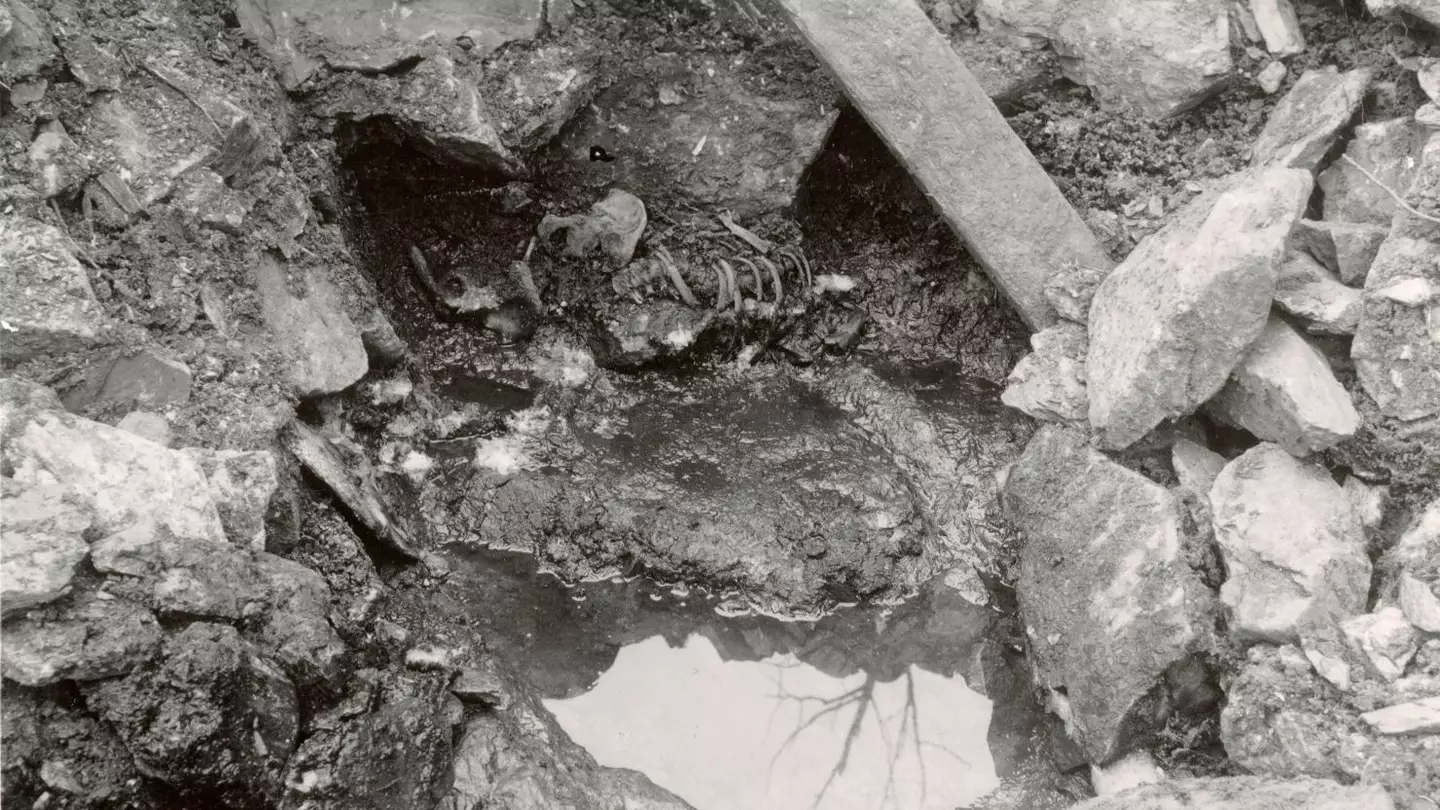The mystery surrounding an 800-year-old skeleton discovered in a well has finally been solved by researchers.
Referred to as ‘Well-man’, this skeleton was unearthed at Sverresborg castle in Norway and is mentioned in Norse literary texts.
The Sverris saga, which chronicles the life of King Sverre Sigurdsson, includes an episode from a military raid in 1197 where a dead man was disposed of into a well.
The text describes the raiders throwing a body into the well to contaminate the water supply, but does not provide any identifying details about the deceased.
This allowed researchers to accurately date when the body was placed in the well and understand the context behind it.
The skeleton was originally discovered in 1938, but due to limited resources at the time, only minimal excavation and examination of the bones could be conducted.
With advancements in technology, scientists have now been able to reconstruct the man’s appearance.
A recent study published on October 25 in the Cell Press journal iScience outlined their comprehensive research derived from the man’s dental samples.

Study co-author Michael D. Martin, a professor at the Norwegian University of Science and Technology’s University Museum in Trondheim, said, “This is the first time that a person described in these historical texts has actually been found.”
He further explained, “There are a lot of these medieval and ancient remains all around Europe, and they’re increasingly being studied using genomic methods.”
The study provides insights into why this individual was mentioned in the Norse saga.
The events of the Sverris saga took place during King Sverre’s era, who ruled Norway from 1152 to 1202 after a succession dispute with his uncle.
Some believe the saga was penned by someone close to the King, offering detailed accounts of names, places, battles, and military tactics.
In 1197, while King Sverre was wintering in Bergen, his adversaries launched a surprise attack on Sverresborg castle, destroying it.
The saga recounts the incident: “They took a dead man and cast him into the well, and then filled it up with stones.”

Subsequent excavations in 2014 and 2016 allowed researchers to recover more of the skeleton, including the skull, for further analysis.
The man was estimated to be between 30 to 40 years old at the time of death, though the exact cause of death remains undetermined.
Examinations revealed a blunt force trauma to the back of the skull and two sharp cuts, likely inflicted prior to death.
Lead researcher Dr Martin Ellegaard from the Norwegian University of Science and Technology, used dental samples to deduce that the man had medium skin tone, blue eyes, and light-colored hair.
Dr Ellegaard remarked, “The biggest surprise for all of us was that the Well-man did not come from the local population, but rather that his ancestry traces back to a specific region in southern Norway. That suggests the sieging army threw one of their own dead into the well.”
He continued, “Showing that his genetic origin may have been in southern rather than central Norway, as was originally expected, changes our perception of the circumstances surrounding the decision of the victors to deposit this particular human carcass in the well. It opens up new possibilities for interpretation and allows for a deeper understanding and novel insights into stories we thought were largely understood.”
Dr Ellegaard emphasized, “Archaeological science, ancient DNA and genetic analyses give us tools to separate fact from fiction, which eventually should give us a more objective and complete view of human history.”

